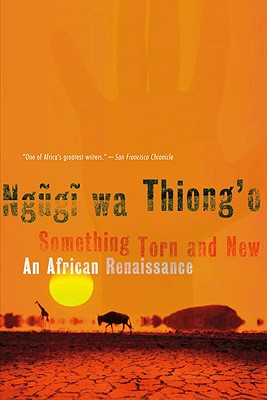Book Review: Something Torn And New: An African Renaissance
Reviewed by:
Kam Williams’Linguicide is the linguistic equivalent of genocide. Genocide involves conscious acts of physical massacre; linguicide, conscious acts of language liquidation. This is precisely the fate of African languages in the diaspora’ If history is replete with the death of languages, there have also been cases where languages have been resurrected from the dead. Israel, for instance, needed the resurrection of Hebrew to reconnect with the ancient memory’
The African
continent’s relationship to the world has thus far been that
of donor to the West. Africa has given her human beings, her
resources, and even her spiritual products’ African
languages are essential for the decolonization of African
minds as well as for the African renaissance’ All this calls
for a very different attitude toward our languages on the
part of African governments and the African intelligentsia.’
’Excerpted pages 17,65, 127 & 128
The colonization of Africa and the Atlantic slave trade has left most people of African descent with a nagging sense of inferiority. This is the thesis of Ngugi wa Thiong’o who believes that Europeans over the past six centuries or so succeeded in stripping the continent of its culture, natural resources, inhabitants and spirituality, while simultaneously spreading the belief throughout the world that Africans were godless savages and that blackness was ’a mark of inferiority.’
In his intriguing new book, Something Torn and New: An African Renaissance, Mr. Thiong’o argues that separating Africans from their native language played a critical in not only their exploitation but in their continued capitulation to being regulated to second-class status today. The author goes on to say that black folks today suffer from an unrequited ’quest for wholeness,’ a thirst for knowledge of self which can never be satiated so long as they speak and write solely in the languages of their former slave masters and colonizers. For English, Spanish, Dutch, Spanish and Portuguese are rife with subtle color-coded symbols and messages which will only continue to reinforce racist notions of white supremacy for generations to come.
At times, Thiong’o certainly sounds like an impractical dreamer, given the abject state of the African diaspora. For instance, in America, the bulk of black children never bother to master English. So, what makes anybody think they’d suddenly be the least bit interested in studying Swahili? That being said, Something Torn and New does nonetheless make a passionate, if not ultimately persuasive case for the restoration of dignity to the black man via the serious study of lost languages and a cultural roots renaissance.

